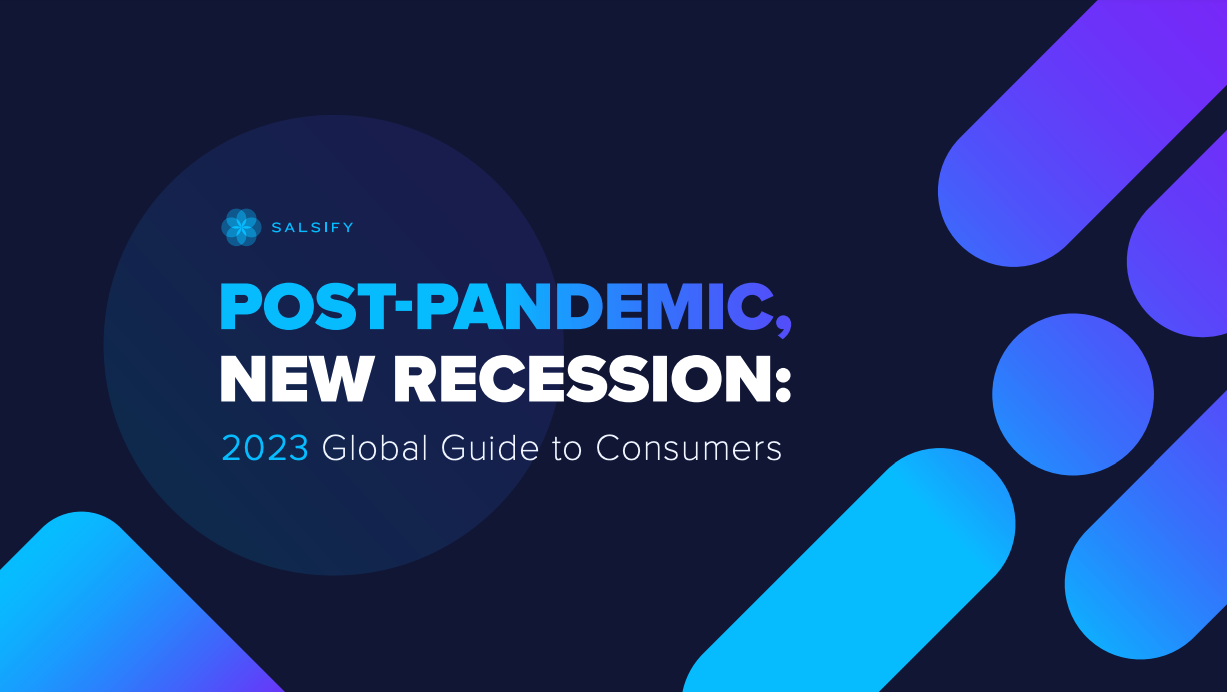

2023 Salsify Consumer Research Report
Download our consumer report to learn how shoppers engage with brands, and learn how to optimize to meet their needs.
DOWNLOAD REPORTPIM
Manage all product content in one central system of record.
Syndication
Easily syndicate product content to every consumer touch point.
Enhanced Content
Enrich product pages with below-the-fold content and rich media.
Intelligence Suite
Bring AI-powered capabilities directly into your Salsify workflows.
Grocery Accelerator
Leverage the first-ever category-wide PXM accelerator in the grocery industry.
GDSN Data Pool
Synchronize standard supply chain, marketing, and ecommerce attributes globally.
Digital Shelf Analytics
Continuously optimize your organization’s product content syndication.
Catalog Sites
Share secure, on-brand, and always up-to-date digital product catalogs.
Automation and AI
Automate business processes and enhance Salsify workflows with AI.
PXM Platform, Integrations, and APIs
Integrate the PXM platform with the rest of your enterprise systems architecture.
Supplier Onboarding
Accelerate supplier onboarding while ensuring your schema requirements are met.
Product Listing
Sell products faster with Product Listing.
Content Enrichment
Increase online conversions with Content Enrichment.
Automation
Save time and increase operational efficiency with retail automation.
SXM Platform, Integrations, and APIs
Integrate the SXM platform with the rest of your enterprise systems architecture.
Syndication Network
Automate how you exchange product content data to the digital shelf.
Enhanced Content Network
Turn product pages into product experiences with Enhanced Content.
Commerce Platform Integrations
Create winning product experiences everywhere shoppers are, including on owned sites.
GDSN Data Pool
Synchronize standard supply chain, marketing, and ecommerce attributes globally.
Open Catalog
Connect to the digital shelf faster with an open, standardized, and free product catalog.
Resources
Resource Library
Explore our ecommerce resources to get everything you need to win on the digital shelf.
Blog
Read our blog to get actionable insights for navigating changing markets and industry demands.
Webinars
Watch our on-demand ecommerce webinars to gain expert advice and tips from our community of industry leaders.
Customer Blog
Gain the latest tips, industry trends, and actionable ecommerce insights.
Knowledge Base
Investigate our knowledge base to build your Salsify skills and understanding.
API
Examine our comprehensive API and webhook guides to start working with Salsify quickly.

Download the report to get expert insights, consumer research, and top industry trends.

For food and beverage brands, sustained success in the online-first market means standing out from the crowd with an omnichannel approach that creates interconnected customer touch points to deliver a cohesive consumer experience.
But what does this look like in practice — and how do brands get omnichannel commerce operations off the ground? Let’s dive in.
Consumers want a seamless shopping experience. From purchase to pickup or delivery, customer support to order tracking, buyers aren’t interested in jumping through hoops to get the information they need.
According to Salsify’s “2024 Consumer Research,” 49% of customers prefer a blend of physical and digital channels when interacting with brands.
For food and beverage brands, the pivot to omnichannel commerce priority creates both challenge and opportunity: If they can deliver a seamless experience, they can earn customer loyalty in a nascent online market. If they can’t, they risk losing long-term relationships to other, more agile competitors.
Consider a business-to-consumer (B2C) looking to track purchases made online that haven’t arrived. If they need to wade through multiple channels — such as phone, email, and social media — and restate their issue each time, their patience is quickly exhausted.
If consumer data is carried over from channel to channel, meanwhile, brands can create a unified experience that meets consumers wherever, whenever, and however they prefer to shop.
Opting into omnichannel offers multiple benefits including improved customer loyalty, enhanced personalization, and better customer data — which in turn boosts brand visibility as consumers call out superior service and response.
But how do food and beverage brands make the move? Here, four steps are critical.
As noted above, the digital food and beverage market differs depending on your geographic location. Understanding geographic variations helps zero in on digital market priorities.
Customers may also have different channel preferences depending on their market. For example, Salsify consumer research shows that:
Even the best omnichannel implementation won’t drive success without the right metrics. For food and beverage brands, this means defining what matters most — this might be new customer conversions, total order volumes, or global brand reach — then collecting and analyzing relevant data to determine if online efforts are working as intended.
Effective omnichannel implementation starts with centralization. Equipped with product experience management solutions capable of creating a single source of truth for all ecommerce efforts, brands can deliver consistent, connected channel experiences that capture consumer interest.
To succeed in a post-pandemic world, food and beverage brands must navigate the omnichannel shift by aligning business best practices with evolving user expectations to deliver seamless, end-to-end customer experiences — anywhere, anytime.

Download the consumer report to explore how omnichannel experiences will place you ahead of the competition.
DOWNLOAD REPORT
Download our consumer report to learn how shoppers engage with brands, and learn how to optimize to meet their needs.
DOWNLOAD REPORTDoug Bonderud (he/him) is an award-winning writer with expertise in ecommerce, customer experience, and the human condition. His ability to create readable, relatable articles is second to none.
Standing out on the digital shelf starts with access to the latest industry content. Subscribe to Below the Fold, our monthly content newsletter, and join other commerce leaders.